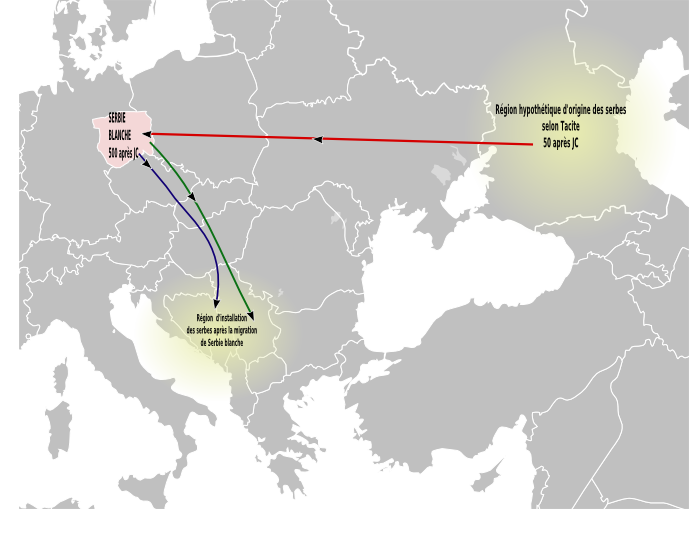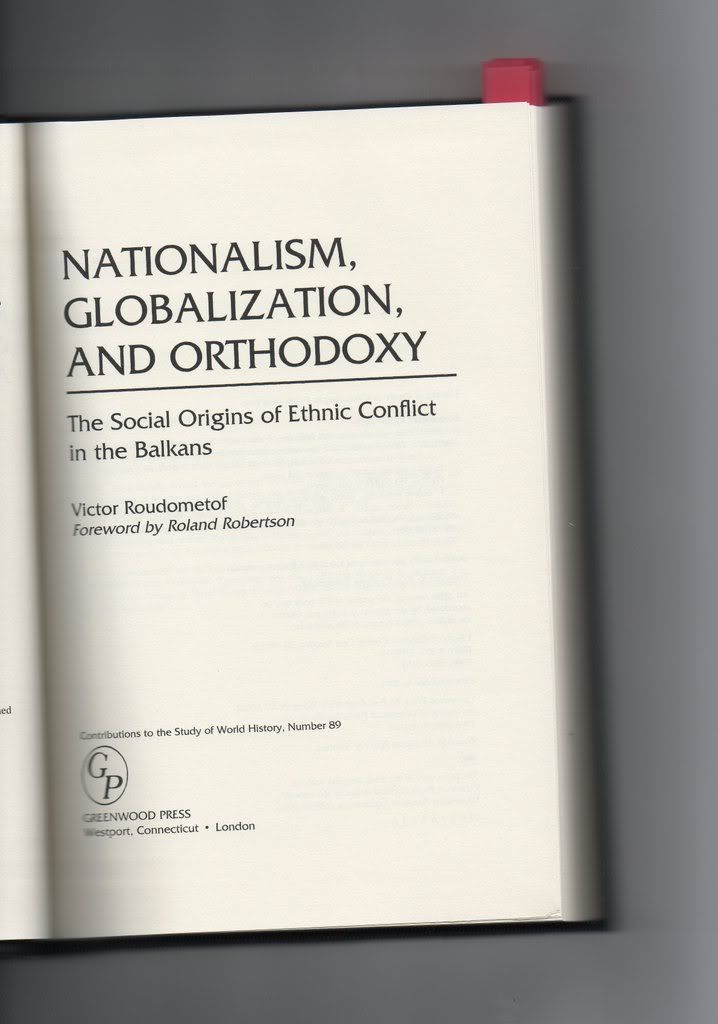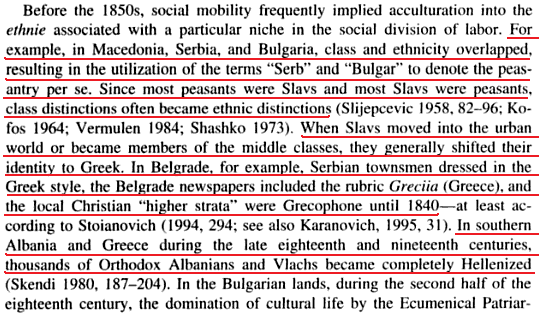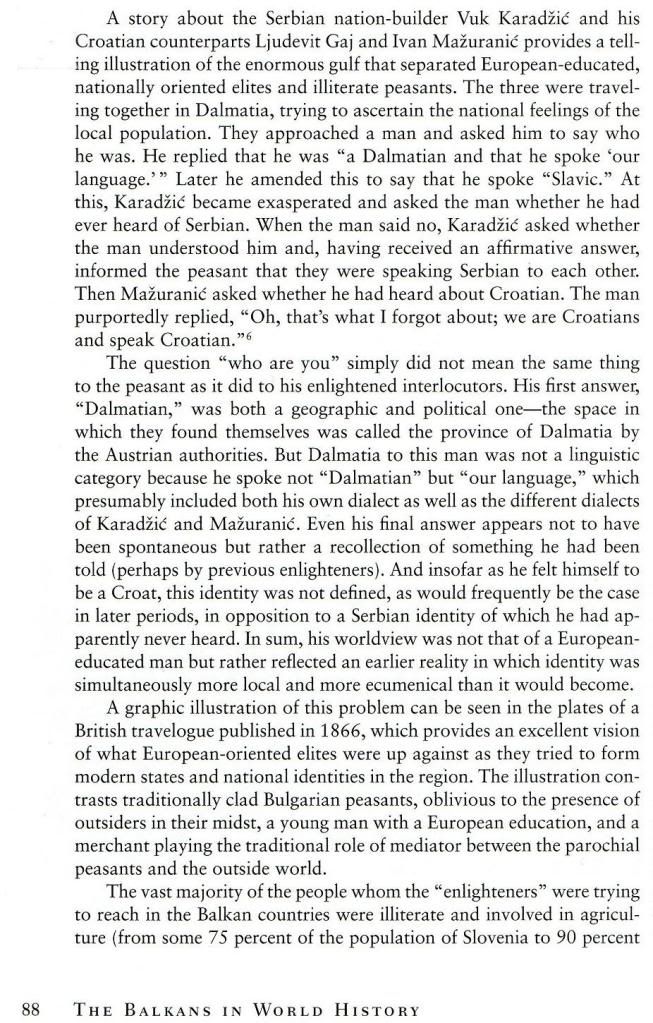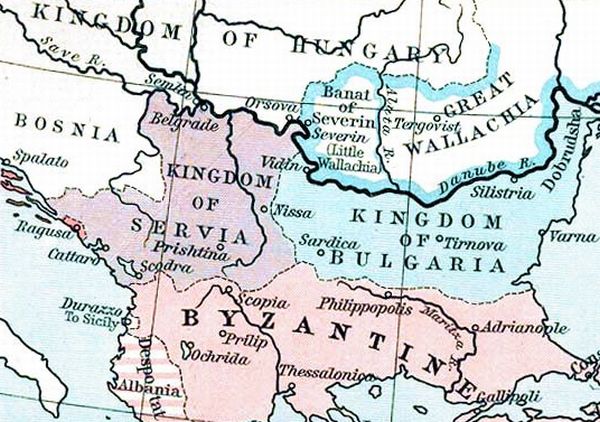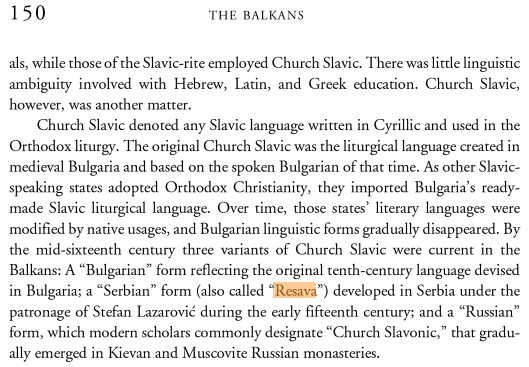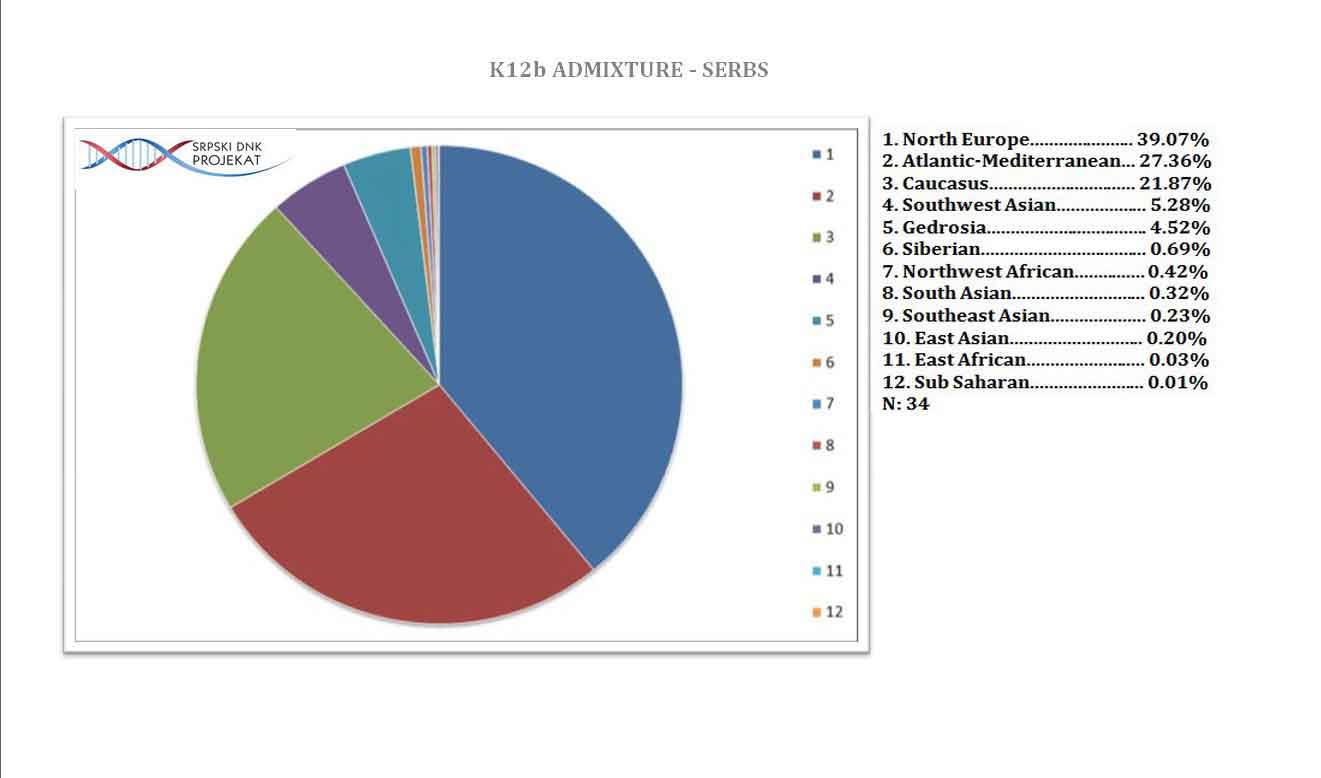http://en.wikipedia.org/wiki/Origin_of_the_Serbs
The Iranian theory
Theory about Iranian origin of the Serb ethnonym assumes that ancient Serbi / Serboi from north Caucasus (Asiatic Sarmatia) were an Sarmatian (Alanian) tribe.[25] The theory subsequently assumes that Alanian Serbi were subdued by the Huns in the 4th century and that they, as part of the Hunnic army, migrated to the western edge of the Hunnic Empire (in the area of Central Europe near the river Elbe, later designated as White Serbia in what is now Saxony (eastern Germany) and western Poland). After Hunnic leader Attila died (in 453), Alanian Serbi presumably became independent and ruled in the east of the river Saale (in modern day Germany) over local Slavic population.[26][27] Over time, they, it is argued, intermarried with the local Slavic population of the region,[28][29] adopted Slavic language, and transferred their name to the Slavs.[30] According to Tadeuš Sulimirski, similar event could occur in the Balkans or Serbs who settled in the Balkans were Slavs who came from the north and who were ruled by already slavicized Alans.[31]
Hypothetical Serb migration from Sarmatia
Deformed human sculls that are connected to the Alans are also discovered in the area that was later designated as "White Serbia".[32] According to Iranian interpretation, different sides of the World are designated with different colors, thus, white color is designation for the west, black color for the north, blue or green color for the east and red color for the south. According to that view, White Serbia and White Croatia were designated as western Serbia and western Croatia, and were situated in the west from some hypothetical lands that had same names and that presumably existed in the east.[33]
It is possible that the Alanian Serbi in Sarmatia, similarly like other Sarmatian/Iranian peoples on the northern Caucasus, originally spoke an Indo-European Iranian language similar to present-day Ossetian. The Ossetian language is a member of Eastern Iranian branch of Iranian languages, along with Pashtun, Yaghnobi and languages of the Pamir. One of the Pashtun tribal groups in Afghanistan and Pakistan is known as Sarbans (Sarbani) and Pashtuns are believed to be of Scythian descent[34] while their language is classified as East Scythian[35] (Sarmatian language is also grouped within Scythian branch).
In Polish history, the Polish nobility claimed to be direct descendants of the historic Sarmatian people (see: Sarmatism) and this might be connected with historical White Serbia and White Croatia, which included parts of present-day Poland.
PS:
The Caucasian theory - According to some interpretations, Serb ethnonym might be of Caucasian or more notably of Lezgian origin. In the Lezgian language, "ser" would mean "man", while "serbi" would mean "men" or "people".[36]


